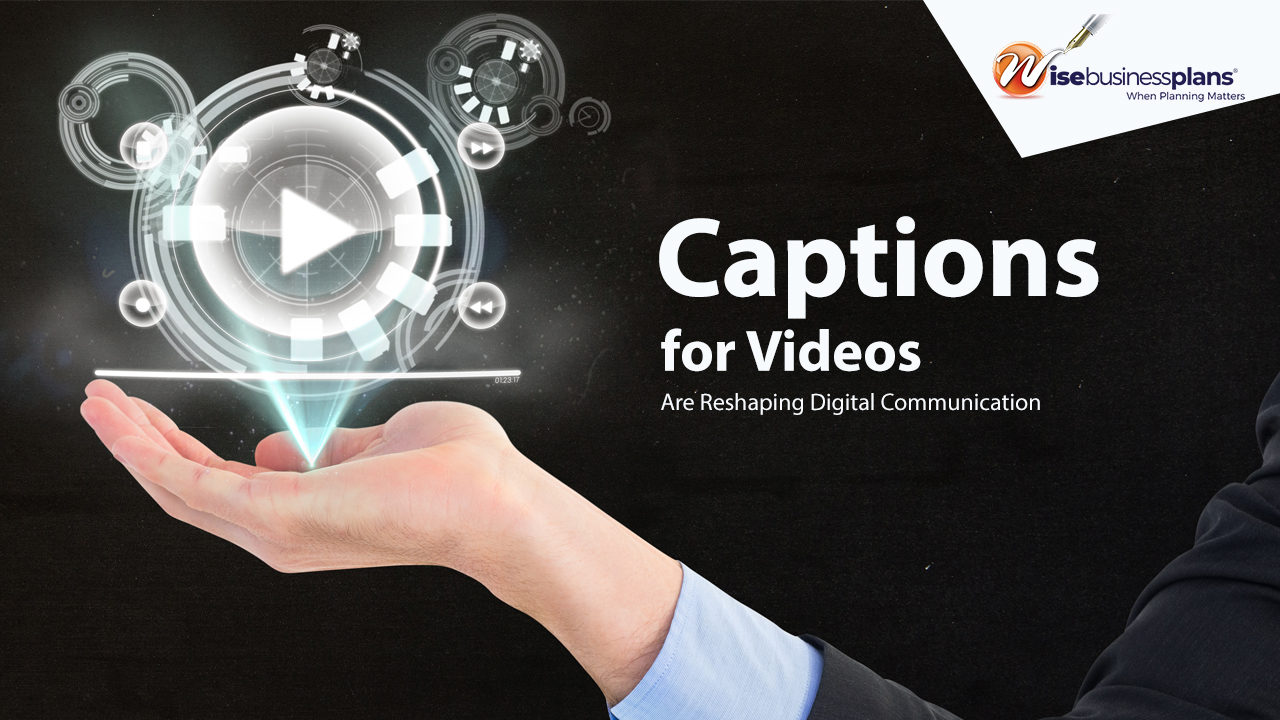How Captions for Videos Are Reshaping Digital Communication
Table of Contents
In today’s digital age, content is everywhere, and video content reigns supreme: over 3.7 million videos are uploaded just on YouTube every day. Video has become a dominant form of communication, captivating audiences across platforms such as social media, e-learning, and business communication.
In this landscape, captions emerged as a must-have tool for video accessibility and engagement. As video content becomes increasingly central to digital strategies, captions have been quietly transforming the way we consume, interact with, and understand video material. Their impact goes beyond accessibility, extending into engagement, comprehension, and even SEO.
The Power of Captions: More Than Just Text on a Screen
Captions are often seen as just an accessibility feature that helps those with hearing impairments to follow along with video content. But quality captions for videos are far more than just subtitles. They are a dynamic tool that can dramatically improve the viewer’s experience, making content available to a broader audience, especially in today’s fast-paced, mobile-first world where many users watch videos on mute.

One of the key benefits of captions is their ability to boost viewer engagement. With as much as 85% of viewers watching videos on mute, subtitles enable every viewer to fully understand the message and interact with the content. This has a significant impact on content performance. A study suggests that 66 % of videos without captions are watched until the end, compared to 91 % of videos with captions. Whether in a noisy environment or a quiet space, captions offer the flexibility to consume video content in different contexts.
Business Benefits of Captions
Captions can offer significant benefits for businesses of all sizes. By making your content more accessible to people with hearing impairments, you can reach a wider audience and increase your brand awareness. Additionally, captions can improve your search engine ranking by making your content more searchable. This can help you to attract more organic traffic and generate more leads. Finally, captions can increase viewer engagement on social media platforms. This can help you to build relationships with your customers and promote your brand. Enhancing digital communication through video captions should align with your business strategy; our business plan writers can assist in this integration.
How Captions Aid Video Consumption
The rise of captions has changed the way audiences consume video content, particularly on social media. Platforms like Instagram, TikTok, and Facebook are pre-programmed to auto-play videos without sound. In such conditions, creators need to capture viewers’ attention in the first few seconds, and captions do exactly that. They allow users to engage with video content even when they cannot listen to the audio (for example, in noisy environments like public transport or the sound-off ambiance of open-plan offices). This makes captions crucial for marketers and businesses that want to expand their reach.
Enhance Your Digital Marketing Strategy Now!
In education, captions serve as a powerful learning aid. Many students benefit from having both audio and text available to better absorb and retain information. A study by Oregon State University that surveyed over 2000 students found that 71% of students without hearing difficulties use captions at least some of the time, and 75% of students who use captions agreed that captions help as a learning aid by improving comprehension.
Likewise, in business settings, captions improve communication clarity, especially in global markets constrained by language barriers. By offering captions in multiple languages, companies can make their content more inclusive and accessible to international audiences.
AI: The Game-Changer in Video Captioning
The rise of artificial intelligence (AI) has brought along drastic changes to the captioning process, making it faster, more accurate, and more efficient. AI-powered tools have made it possible to automatically generate captions for videos, which reduced the need for time- and cost-sensitive manual transcription. This has allowed creators to focus on other aspects of production while AI does the routine part for them.
It doesn’t stop at automatic captioning. AI solutions to translate video content are the next step in AI tools – now creators can extend their reach beyond language barriers. The algorithm detects speech, translates it, and applies the translation as accurate time-fitted captions or as natural-sounding voice over.

Image Credit: Goes to dubs
This is a powerful tool to expand into international markets. As AI-powered tools learn from actual human speech, they allow for the creation of more inclusive and diverse content, ensuring that videos resonate with audiences across the globe.
The Unexpected Benefits of Captions
As we’ve already established, the benefits of video captions go far beyond assisting viewers with hearing impairments. Some less obvious but equally important benefits include:
SEO and Discoverability
One of the most unexpected advantages of captions is their impact on SEO. Search engines can’t “watch” videos but they can read text. Properly formatted captions add the searchable component to videos, improving their visibility in search engine results. This can increase traffic and result in higher engagement rates as users find videos more easily.
Supporting Different Ways of Learning
Captions help make video content accessible for everyone, accommodating different learning styles. Some people grasp information better when they can see it, while others learn best through listening. Visual learners benefit from reading the text on the screen, while auditory learners can follow along with the audio. This means more people can connect with educational videos in a way that suits how they learn best.
The Future of Captioned Communication
Captions are here to stay. The future of captioning technology looks promising as the tools are advancing and reshaping digital communication even further. AI is already evolving to generate captions in real-time with minimal latency, which enables more dynamic live-streaming events. Additionally, AI is improving in interpreting complex audio input, such as videos with multiple speakers, accents, or background noise.
Captions are an advanced tool already, with the possibility for creators to fully customize the size, color, placement, and animation for the on-screen text. But we can surely anticipate the rise of fully customizable captions for viewers too: in the near future, we expect social media and video player apps to introduce captions customization to suit every viewer’s personal preferences.
As technology continues to evolve, we can expect captioning to become even more integrated into everyday communication. Emerging trends include the use of captions in virtual reality (VR) and augmented reality (AR) environments, where captions help provide context and improve comprehension.
Checkout our free business plan examples now!
FAQs
How to put captions on videos in settings on mac?
To enable captions on your Mac, follow these steps:
- Choose the Apple menu in the top-left corner of your screen and select System Settings.
- Click on Accessibility in the sidebar (you may need to scroll down to find it).
- Go to Hearing and then click on Captions.
- From here, you can adjust the settings to customize captions according to your preferences. Change any settings that you don’t like.
What are the benefits of using captions in videos?
Captions improve accessibility and boost viewer engagement. They also enhance comprehension and improve SEO for better discoverability.
How do captions increase viewer engagement?
Videos with captions are watched longer since many viewers watch on mute. Captions are essential for capturing attention in noisy environments.
Can captions aid learning?
Yes, captions support different learning styles and help viewers better understand content. They can significantly improve information retention.
How does AI enhance the captioning process?
AI automates caption generation, making it faster and more accurate. It also enables translation, allowing creators to reach a global audience.

